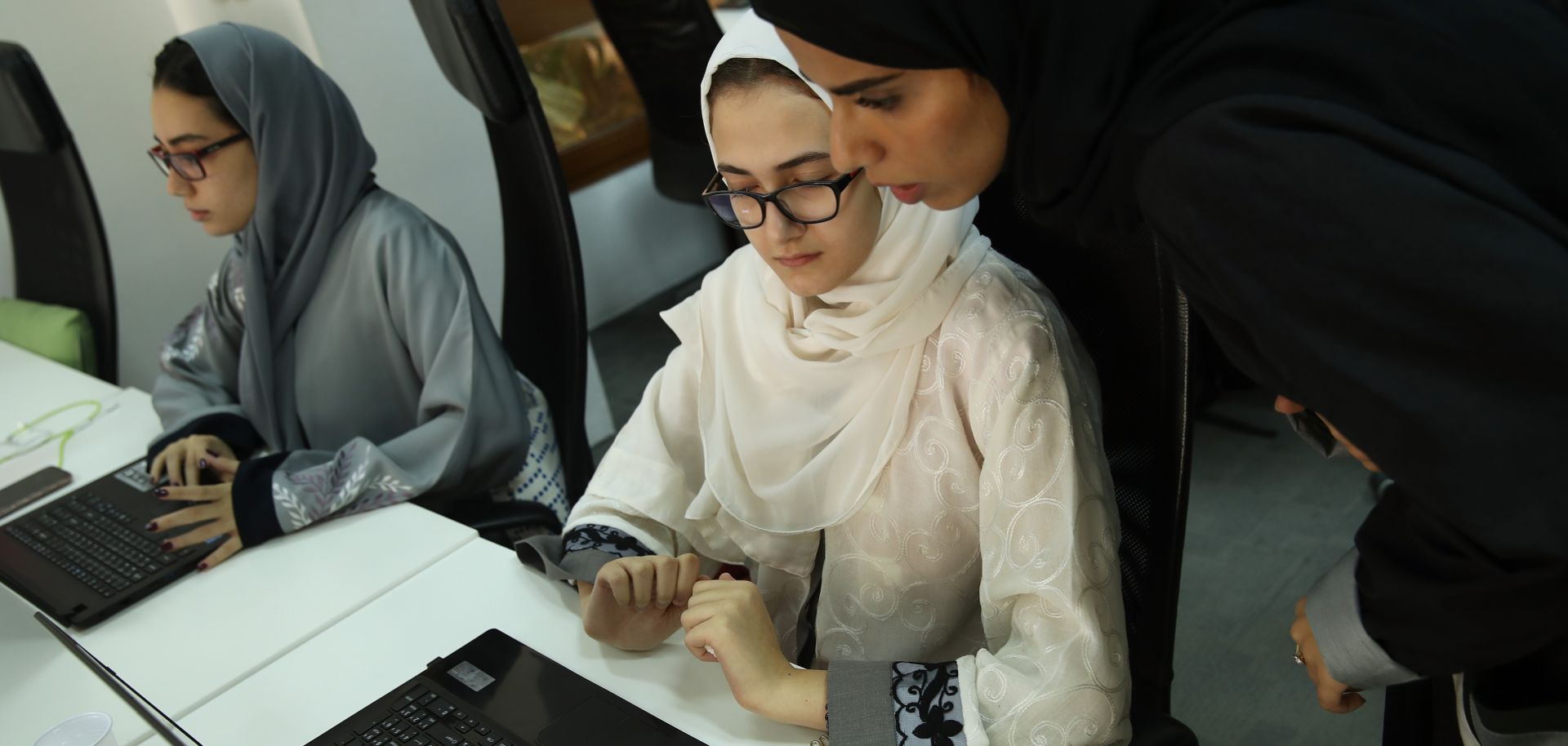
Undaunted by the middling results of past attempts, Saudi Arabia has undertaken a new campaign in its decadeslong project to replace expatriate workers with Saudis, a process known as "Saudization." And facing high youth unemployment levels, a burgeoning population and waning oil revenues, the Saudi government has more reason than ever to push its Saudization scheme forward. Though the latest initiative, like the ones before it, will probably fall far short of its goal, the government's new plan has some advantages over its predecessors, incorporating lessons learned from their failures.
Taking heed of these lessons, the Ministry of Labor and Social Development unveiled a new plan for Saudization in 2011. The scheme, known as the nitaqat (or "categories") system, evaluated companies based on how many nationals they employed and assigned them to a color category accordingly (platinum/blue and green for highly Saudized companies and yellow and red for those lagging behind). The plan worked, at least initially. As of late 2014, just 14 percent of Saudi companies were in the yellow or red categories. When oil prices began to fall around the same time, however, Saudi Arabia's financial situation took a turn for the worse. Today, Saudi Arabia's unemployment stands at 11.6 percent, and in 2015, employment among Saudi citizens grew at its slowest rate in 17 years.
The Saudi government hopes to decrease unemployment to 7 percent this year. To do so, it has launched an updated nitaqat scheme — the third iteration to emerge in five years — as part of a plan to create between 1.1 million and 1.3 million jobs. The fourth and final phase of the scheme, due to roll out by the end of the year, is designed to address the challenges that previous Saudization endeavors have encountered. Unlike past plans, the latest version will provide for greater communication between the Labor Ministry, the central and regional governments, and the various sectors implementing Saudization — including total Saudization plans in sectors beyond telecom, such as textile manufacturing. The new nitaqat system also promises to consider qualitative issues in assessing businesses' performance. Perhaps more important, the initiative appears to be under the sole purview of the Ministry of Labor and Social Development, a model that has proved successful in earlier Saudization drives. Overall, the plan's components reveal that Riyadh understands the shortcomings of past Saudization schemes and is putting that knowledge to use.
In many ways, Saudi Arabia's latest plan for increasing its employment rate is a vast improvement over previous iterations, but implementing it will be an uphill battle. Though the new Saudization scheme is aimed at the country's current and pressing problems — diminishing oil revenues, a growing population and rising unemployment — it will require generational shifts to make Saudization a success.



